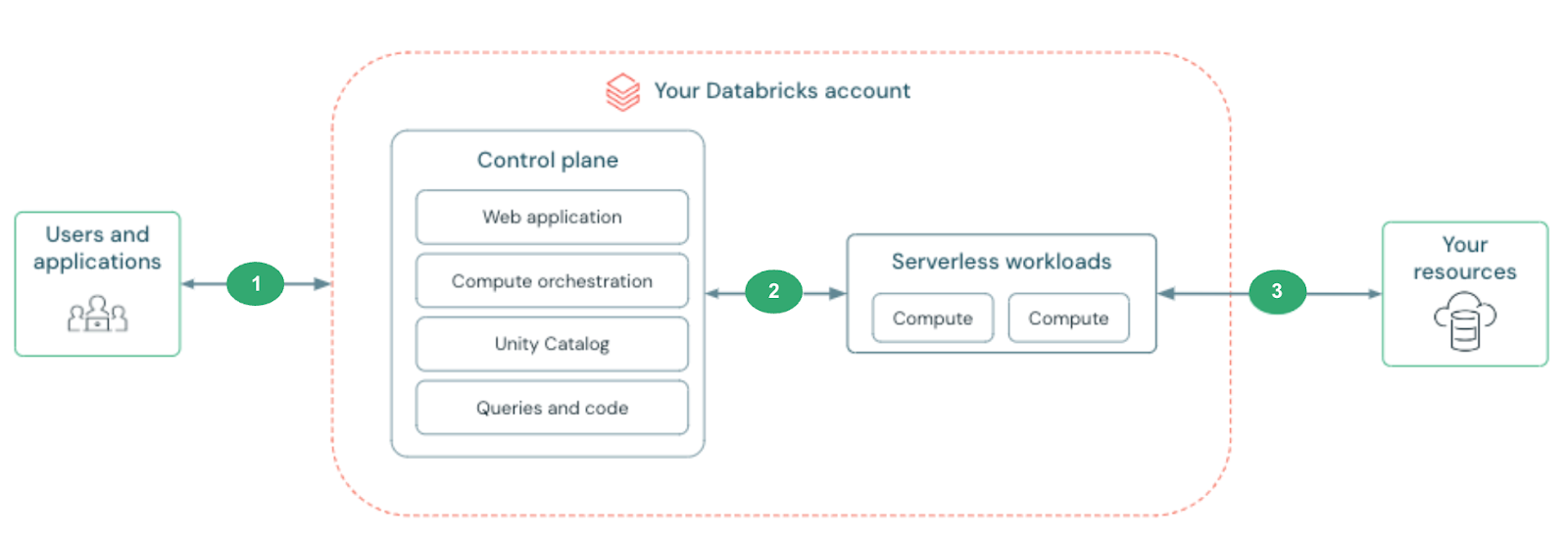Understand Databricks serverless networking costs
Data transfer and connectivity refer to moving data into and out of Databricks serverless environments. We don't currently bill for networking on serverless products. In the future, when we introduce these charges, they will only apply to customers using Databricks serverless compute. Customers using classic compute manage and pay networking costs directly to GCP.
In-region Google API access from serverless uses Private Google Access and is not charged by Databricks
Identify billable serverless connections
Connection 3 in the diagram below shows Databricks serverless workloads, which run in the Databricks-managed cloud account and access your data or services. You are charged for the associated data transfer and connectivity costs.

To understand your usage, see Billable usage system table reference.
Types of connectivity charges
Databricks charges for the following types of connectivity:
Connection type | Description | Charged | Timeline |
|---|---|---|---|
Private Connectivity (/GB) | Charges for per GB data processed. Databricks private connectivity allows you to connect to cloud resources without using a public IP. | Yes | Expected in the future |
Private Connectivity (/hour) | Charges for per hour private endpoint fees. Databricks private connectivity allows you to connect to cloud resources without using a public IP. | Yes | Expected in the future |
Public Connectivity (/GB) | Charges for per GB data processed. Databricks public connectivity allows you to connect to cloud resources or the internet using public IP addresses. | Yes | Expected in the future |
Data Transfer (/GB) | Data transfer includes in-region data transfer between availability zones, data transfer to a different region, and data transfer to the internet or other clouds. | Yes | Expected in the future |
For detailed pricing information, see Data transfer and connectivity.
Cost management best practices
For practical guidance on optimizing Databricks costs while maintaining performance, see Best practices for cost optimization.